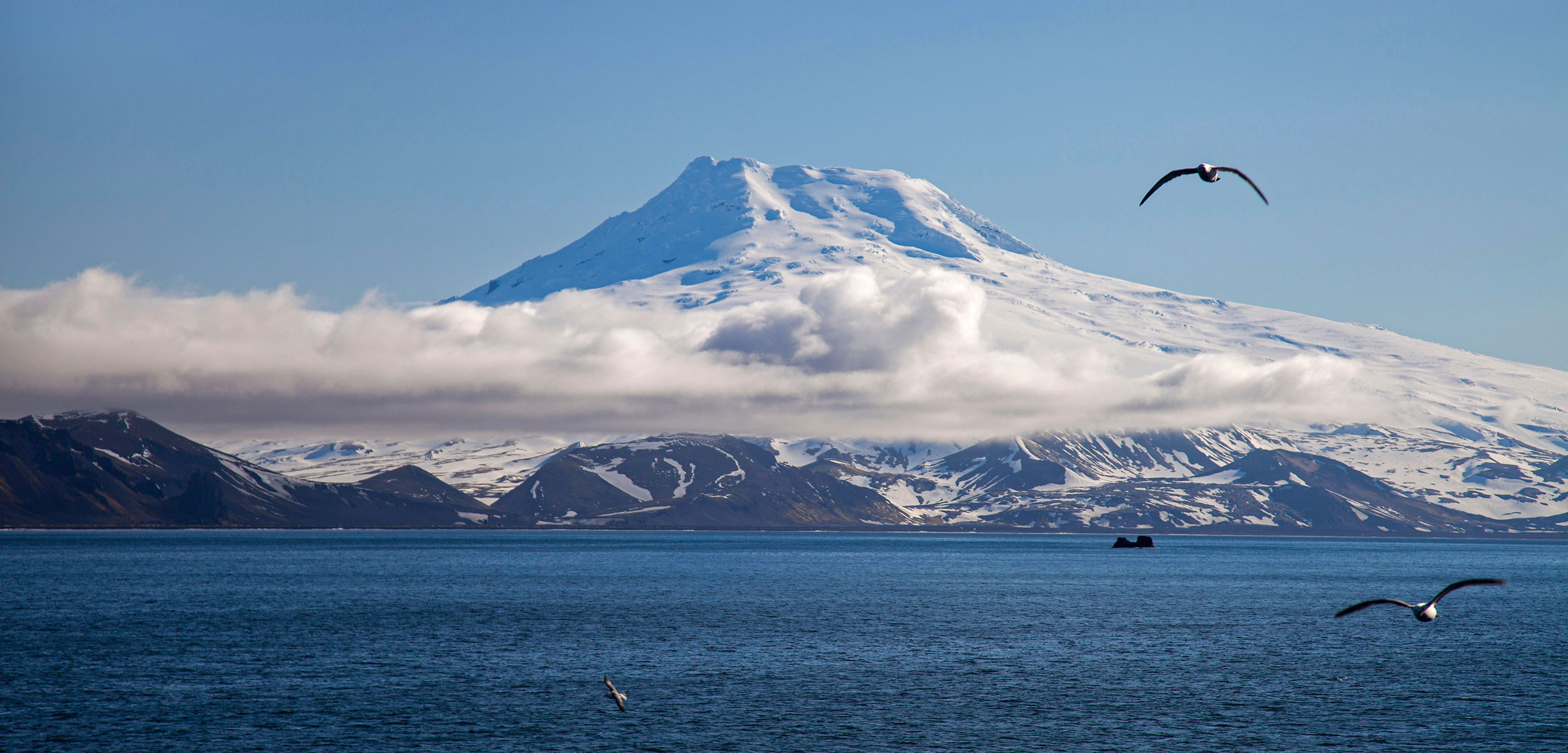Cut Off From the Ocean by a Volcanic Eruption, These Fish Had to Learn to Live in a Lake
For the past 300 years, a small population of Arctic char has been eking out an existence in a remote lake.
Article body copy
In 1732, the crew of a German whaling ship peered out at an extraordinary sight. Great plumes of ash were rising from the strange, uninhabited island of Jan Mayen—an isolated sliver of land between northern Norway and Greenland. What the whalers saw was the eruption of Beerenberg, a cataclysmic volcanic event that reshaped Jan Mayen and caused a small population of Arctic char, a salmon-like fish, to get cut off from the ocean.
The fish and their descendants have been stuck in Nordlaguna, a tiny lake on Jan Mayen, ever since. For 300 years, this population of thousands of Arctic char has had to cope with confinement—and go to extreme lengths just to survive.
When Eiliv Larsen, a geologist at the Geological Survey of Norway, travels to Jan Mayen, he usually goes in a Hercules, a large military aircraft. “It’s basically in the middle of nowhere,” he laughs. The island is a mere 55 kilometers long, and is home to just a handful of military and research personnel. Their settlements lie in the shadow of Beerenberg—the northernmost active volcano above sea level in the world.
The eruption on Jan Mayen in 1732 caused significant changes to the island, Larsen explains. This included the reshaping of land by lava flows and the deposition of ash. In new research, Larsen and his colleagues analyzed the age of sediment and debris on the island to show that this is what caused Nordlaguna to become landlocked in the span of just a few weeks or months. “It’s really a violent and dramatic event,” says Larsen.
The swift change is quite unlike that experienced by other populations of landlocked char, such as those in Lake Geneva, Switzerland, which were trapped more than 10,000 years ago because of melting glaciers. It is extremely rare to find a case in which char became isolated so recently and so suddenly by a natural process, says Jan Grimsrud Davidsen, a biologist at the Norwegian University of Science and Technology’s University Museum.
Elsewhere in the northern hemisphere, the vast majority of Arctic char migrate between the ocean and freshwater lakes and rivers. These isolated populations are the exception, but they show something dramatic about Arctic char’s resilience.
For many species, such drastic changes would spell doom. But not for char. Even though Nordlaguna is a tiny habitat—just 1.6 kilometers long and 40 meters deep—with little beyond a few freshwater invertebrates to eat, the fish are making do. They have turned to eating each other.
This isn’t the first place where isolated char have become cannibalistic. And as in other landlocked situations, the shift in diet has had a pronounced effect on the fish’s physiology. Some of the Nordlaguna char grow huge—up to 70 centimeters or so—while others stay small, less than 20 centimeters.
Lisandrina Mari, an evolutionary biologist at the Czech Academy of Sciences who was not involved in the research, says that when char populations turn cannibalistic, the large fish are noticeably different in appearance from the smaller ones. And it’s not just their size. “They look like completely different species,” she says, explaining that the larger, cannibalistic char tend to have more streamlined body shapes and mouths positioned right at the front of the head instead of lower on the skull, which suits their lifestyle of hunting fellow fish.
Only the most successful char get to take on this form. “It’s a kind of battle,” says Davidsen. “If they can reach a decent size […] they can change to start feeding on other fish.” In this particular lake, with food so scarce in general, the char are “living on the edge,” he adds.
The curious thing is that this situation has not doomed the fish. Only a handful of the char grow big enough to become cannibals. Meanwhile, they continue reproducing at a high enough rate to sustain their population.
The char of Jan Mayen once lived very different lives, until the eruption of 1732 trapped them in a natural experiment. Davidsen says the Nordlaguna population seems stable, at least for now, which suggests that, even when faced with extreme and sudden change, the Arctic char is a fish that is primed to survive—even if at a grisly cost.

